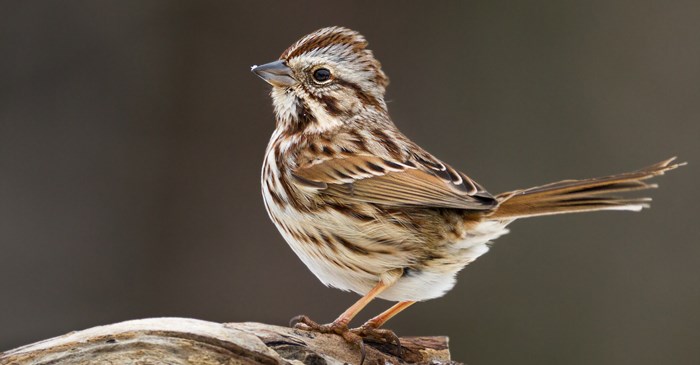The sweet, cheery song of the Song Sparrow is heard just about everywhere in the continental U.S. Though plain in appearance, scientists have actually discovered several amazing things about how the “little brown bird” makes its way in the world.
How to identify a Song Sparrow
The Song Sparrow is identified by the brown streaks on its white breast and grayish back, brown wing and bold, brown stripes across the crown and eye. In different regions of the U.S., its appearance can vary. Birds in the southwest are lighter in color, perhaps to better blend with its desert surroundings. And Song Sparrows in Alaska are deeper brown, and three times larger and twice the weight as mainland species.
Where the Song Sparrow lives
These ground foragers can be found darting around bushes, brushes and thickets in open habitat, such as the edges of forests and marshes, overgrown fields, and desert canyons and drainages. They’re also drawn to suburban and urban yards, where they’ll nest in flower beds and evergreen shrubs.
Two big things about the Song Sparrow: Song and territory
The song of the Song Sparrow stands out: three clear notes, followed by a trill and buzzes, finished with more clear notes. Scientists have discovered a male actually has 8 to 10 subtle variations in his arsenal, each with a specific purpose, like winning over a mate, claiming territory and warning intruders they’re about to be attacked. This complex communication system is essential for maintaining their territories, which are maintained from season to season and closely guarded.
The Song Sparrow’s breeding season is active and filled with rivalries. As they raise as many as seven broods, males keep a sharp eye out for intruders. One biologist recounts in the Scientific American how a single male chose his timing carefully, and attempted his hostile takeover when the male would be most occupied — feeding fledglings. Even so, it’s pretty common for paired males to “step out.” Researchers believe one in five will mate with several females in a single season.
Watching them in your backyard
The colder months are a great time to observe Song Sparrows at the feeder. Song Sparrows love sunflower seeds, safflower and cracked corn, which makes Lyric Supreme Mix the optimal choice to draw a flock.
